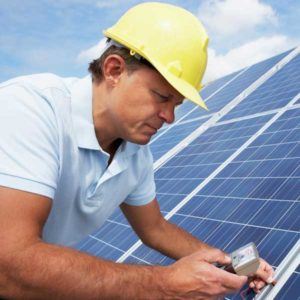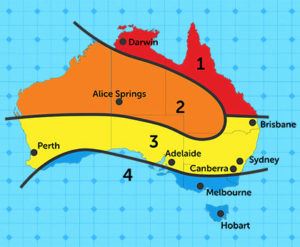
The government solar incentive, which provides a significant discount off the upfront cost of a solar system, is due to be phased out starting 1st January 2017.
The incentive has had a huge influence on accelerating the growth of solar in Australia to the point where over 1.5 million homes now have solar panels installed.
Currently, for a 5kW solar system, which is large enough to meet the energy requirements of a medium-sized family home, the average incentive is $3,914. This incentive comes as a one-off payment which is usually used as a discount off the upfront cost.
On January 1st, for the 5kW system example, the incentive will drop approximately $260. This will happen again every year until the rebate completely disappears.
In order to qualify for the current, full incentive, your system must be installed and commissioned by the cut-off date of 31st December 2016.
Because installers generally get very busy in the lead up to rebate deadlines like this, it will pay to act sooner rather than later. This is even more true if you’re considering a solar system for your business because of the significant lead times associated with the approval process.
You can arrange quotes by clicking on the button below and completing the quote form.
But I thought all the Government solar incentives were already gone…
One of the most persistent misconceptions about solar in Australia is that “Government incentives are no longer availableâ€Â.
This is not true.
The reason for this misconception is pretty simple.
When people say that there were big cuts to the financial incentives, they are thinking of the feed-in tariff. The feed-in tariff is the money you receive when your solar system produces energy you cannot use and pushes it back into the grid.
4 or 5 years ago, right across Australia, the feed-in tariff was very generous and many households made a lot of very good money from it.
This was all relative, however, because at the time installing a solar system was also very, very expensive.
Back then, a baby-sized 1.5kW solar system would have cost you in the region of $10,000.
Nowadays, because of advances made in solar technology and huge competition in China helping to drive prices down, you can get a big family-sized 5kW system for as little as half that.
The “other” Government solar incentive
The feed-in tariff is not the only Government incentive to install solar in Australia. The STC (Small-scale Technology Certificates) incentive has been around in its current form since 2009 when it was introduced as part of the Renewable Energy Target. The system is confusing, but put simply, works something like this.
-
A solar system receives an STC for every 1,000 kilowatt-hours of electricity it is expected to produce over 15 years. As a real world example, a 5kW solar system installed in Sydney in July 2016 would be expected to produce 103,000kWh in its lifetime, so would be eligible for 103 STCs.
-
Once these STCs have been authorised they can be sold to help recover some of the cost of installing. Commonly, they are exchanged with the system installer for a discount off the install price.
-
The value of these STCs is determined by the forces of supply and demand. Supply coming from renewable energy creators  such as homeowners installing solar, and demand to buy coming from entities (usually electricity retailers) which are required to buy STCs to cover their clean electricity generation targets. This market price is $38 per STC at the time of writing this article. For the Sydney home installing 5kW example, their STC value would equal $3,914.
How much am I eligible for?

This all depends on where you live and what size system you are looking to install. This is because a 5kW system produces more electricity than a 3kW system and a solar system in Darwin will produce more than an identical one in Hobart.
A 5kW system is the most common size solar system to install in Australia, it’s the perfect size for a medium-sized household, so let’s use this for our example.
First look at the map of Australia to determine which STC zone you are in. Then Look at the table below to see how much you would be eligible for in your zone with a 5kW system.
| STC Zone | Incentive for 5kW |
|---|---|
| Zone 1 | $4,598 |
| Zone 2 | $4,370 |
| Zone 3 | $3,914 |
| Zone 4 | $3,344 |
If I wait, will solar panels get cheaper?
Many people in the past have justified putting off installing because technology was improving and they believed prices would only get cheaper.
Until a couple of years ago, this wasn’t a bad idea. Solar technology and economies of scale in the manufacturing process were improving at an incredible rate and there were no signs of slowing.
However, more recently, the solar PV industry has matured greatly and prices have begun to plateau.
We are now facing the possibility that installation costs will actually begin to increase.
There are two reasons for this.
-
The STC incentive will begin to phase out.
-
With around 70% of the cost of the components of a solar system coming from overseas, the Australian Dollar exchange rate also plays a big part in installation costs. Many financial analysts are predicting the Australian Dollar will fall (some quite significantly). This will place pressure on installers to pass on these increased costs to customers.
Is Solar Really Worth it though?
Absolutely it is.
…In most cases.
To be perfectly honest, there are some situations when solar will probably not make good financial sense.
For example:
- You’re planning to move house soon: You probably won’t be able to recoup your investment quickly enough. Though there is evidence that you’ll add to the value of your home.
- Your electricity bill is very small  say $60/month: The main benefit of solar comes from reducing your electricity bill. If you don’t have much of one to begin with there won’t be much to save on.
- You aren’t at home for long periods, you’re a fly-in fly-out worker etc. In order to benefit from solar, you’ll need to actually utilise the power your system generates at the time it is being generated. If you’re not home for long periods, then you won’t be able to do this.
Now this isn’t an exhaustive list, for a variety of different reasons, solar may genuinely not make sense for you.
If none of these describe you, though, and you haven’t installed solar yet then you should at the very least investigate it further, get quotes and run through the sums for yourself.
This is because the upside of solar is quite amazing.
- Investment paybacks as short as 3-5 years.
- Protection from rising electricity costs.
- Electricity bills cut by up to 75%.
With the STC incentive phasing out from January, now is the time to get quotes and run the numbers.
The financial case may never look stronger than right now.
Fortunately, you can get started right here. At Solar Market, we have helped over 188,000 consumers like yourself find out if solar is right for them by getting 3 quotes from solar installers.










